Mobile Development
Business
How Long Does it Take to Make an App?
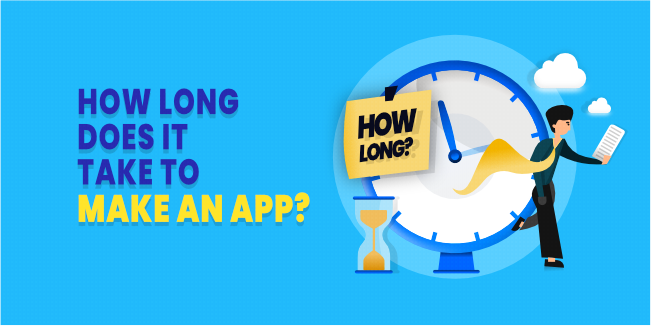
Mobile apps fuel continuous change in the market, addressing consumers and company activities. There's no dispute that businesses are demanding the same level of attention as before, with 3.96 billion active mobile app users worldwide. Not only has the estimated revenue for mobile applications in the business sector skyrocketed, but demand and spending are also expected to grow at a rapid rate. As a result, it's time to examine each possible variable influencing a mobile app development process.
You are more likely to get started if you understand the advantages of having a mobile app for your company. Typically, businesses and startups ask about the app development process and cost. Still, we're now moving on to another crucial aspect: the timeline for producing an app, the necessary resources, and all of the work that goes into it. As a result, the question before us today is: how long does it take to create an app, and how do you make one?
How Long Does It Take To Develop an App?
What is the average development process for an app? To answer this question, we must understand the stages of application creation and the elements that might influence the completion timetable.
The average development timeline for apps varies based on their complexity and the number of features they contain. The following is an example:
Simple App Development – 2-4 months
Average App Development – 4-6 months
Complex App Development – starting from 9 months
Because every situation is unique, delays can occur for various reasons, including the product's complexity, model structure, partner app development firm, etc.
Example of a Simple App
Typically, simple programs contain fewer than five screens and do not exchange data with other systems' databases. They don't collect user needs or actions, and they don't register users by email.
Example of an Average App
An app may have many processes. They have around 10 screens, a personal account, authorization through social media networks, integration with a server or website, and payment procedures.
The majority of online companies and booking systems are examples.
Example of a Complex App
On the other hand, complex apps include applications that may support real-time synchronization, interactivity, data integration with any databases, animation, and even more.
Examples are popular social media apps.
Factors That Impact the Development Timeline
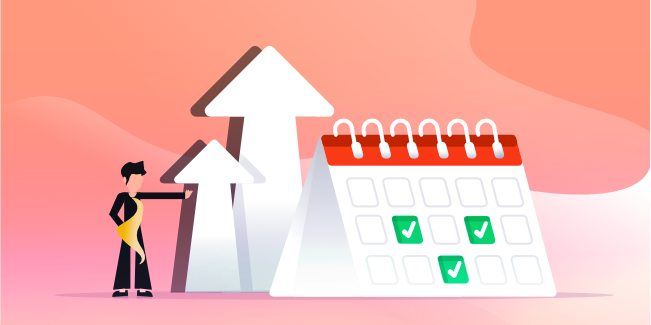
When estimating the time and cost of developing an application, don't forget to include several elements. We've gathered a few factors and calculated their influence on your timeline.
The Complexity of an Idea
The complexity of an app is the most significant element affecting its timeline. It involves the number of screens, features, and roles in the product. The app's complexity determines the required software development and design efforts.
Creating a basic application might take weeks, while a sophisticated one may take months. As a result, there's backend development and frontend design to consider.
The average time to build apps like Uber is 1100 hours, while applications like Calm may take 880 hours. However, if you want to develop something unique, such as a SaaS business, the process might take longer than 1200 hours.
The Precise Requirements
The requirements document describes the fundamental elements of an app and what it's all about in detail. As a result, the more comprehensive the requirements are, the less time it will take to develop an app.
The time it takes to create an app might be sped up or delayed by such features as backend infrastructure, CMS selection, and third-party service integration. The cost and time will rise if you want to add more features. Indirect costs will also increase. For example, project management or business analysis expenditures might arise.
The following are some characteristics that founders seek for solutions:
- Sign up through social media or email
- Chat or messaging
- Push notifications
- Portrait or landscape view
- Payment integration
- Maps integration
- User login and more
Various features depend on the sort of software. The time needed to develop the essential features in chat apps, for example, might be 80 hours. In contrast, Ads Manager may require more than 160 hours.
The Accuracy of the Final Result
The latter are digital blueprints that show what the minimal viable product will appear. The documentation is essential for understanding the final aim and app development timetable. The design team subsequently utilizes these documents during wireframing mockups.
It does two things:
- It provides information required to identify potential pitfalls.
- It includes only essential functionalities.
If the product development requirements aren't obvious at first, you'll receive more change requests during the middle of the project. As a result, use an agile approach for product creation.
You can add a wireframe to represent the essential aspects of your large, complex site. The aim is to address all clients' pain points while still giving them a unique user experience. During the process, this is what happens:
- As a team, you create a wireframe
- Then you present it to the stakeholders for feedback and possible shortcomings.
- You make changes as per the suggestions.
- Repeat the process until you get the desired outcome.
Remember that wireframes for a simple app like a meme generator may take 2-3 days to complete, depending on the project's complexity.
The Business Expertise
If you're a developer specializing in coding, you need help with product and design strategy. However, if you are a new entrepreneur, you will require assistance from beginning to end.
There are several more elements to consider. If you're using a company model that involves recruiting an in-house team, bear in mind the time it will take to hire and train them for the task.
The design and development time will only be considered if you already have a team.
However, if you don't have as much time, outsource the job to a developer or a product development firm. You will save a lot of time in this situation.
App Development Timeline and Stages
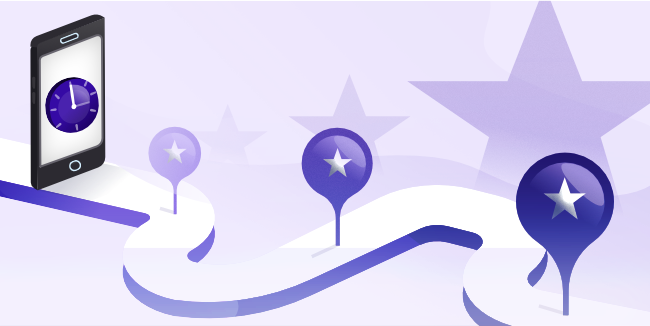
Each stage of app development has its own set of requirements and limitations. Each phase determines the size of the project and the procedure you must follow. To plan your app correctly, you must first estimate how long each stage will take.
Planning Stage
It's the stage in determining the app's development timetables where you have to make an informed guess. It is a crucial step in estimating software development timelines. It is the stage where you create and define the expectations for a project roadmap. In this phase, you collect and analyze information about the project, the market, competitors, and consumers. It takes around 2-3 weeks to complete.
The length of time it takes to complete the discovery phase varies. Here are some factors to consider:
Requirements and Specifications
It might take up to two weeks to write and handling specs. Here are a few things you must include in the brief to give you an indication:
- Project goal and success metrics
- Request for proposal (RFP)
- Budget range
- Non-disclosure agreement
- Approximate date of delivery
Design Low-Fidelity Wireframes
Low-fidelity wireframes are the product's initial visual representations. It aids designers and clients in getting a good feel for the design and the product's capabilities. They allow businesses to plan ahead of time and optimize processes while keeping initial expenses low and lowering the overall app development time.
Define Tech stack
It's also crucial to evaluate the technology stack required for MVP development. Mobile app development projects can be classified as either web, native, or hybrid apps.
A native application (Android app or iOS app)is a program designed for a mobile operating system (Objective-C, Swift for iOS and Java, Kotlin for Android). In contrast, a hybrid app is a web application created using Flutter, React Native, Xamarin, or other technologies.
The entire research process might take 40-80 hours of app development time from start to finish. If you have an app idea, contact us for a Discovery Workshop. We will help you create a mobile app development timeline and more.
Design Stage
You conceive and iterate the product's user interface (UI) and UX design in the design phase. This procedure results in a blueprint for app developers who will begin developing the product.
Create High-Fidelity Wireframes
High quality is a computer-based replica of the product closest to the finished item.
Low-fidelity wireframes are used first to match the narrative with the content strategy. Then high-fidelity wireframes are created for the layout and app hierarchy. The high-fidelity wireframes are the final product.
Create UI Kit
The UI kit's user interface components enable the users to perform tasks. A UI kit contains application elements such as buttons, navigation buttons, checkboxes, widgets, and progress bars.
Finally, UI kits include all of the interface design elements so that you don't have to create them yourself. They call for strict adherence to the mobile app development timetable.
It may take between 40 and 80 hours to complete the design phase. However, both planning and design stages might last two weeks to one month.
App Development Stage
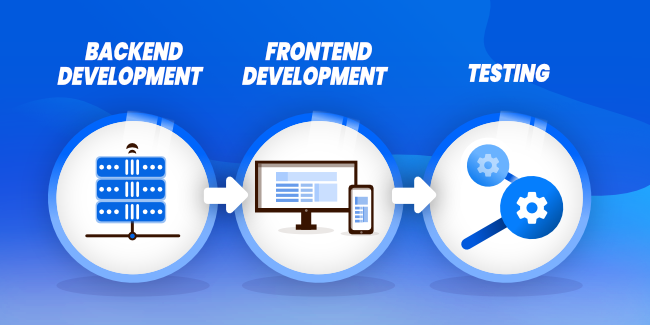
The development stage is the most crucial aspect of app creation. It's all about the frontend and backend development in this phase. In addition, it covers the process of beta testing and uploading to app stores.
Backend Development
The backend of an application is the hidden component that keeps data and provides security. It performs the same function as a server.
You can use an API (Application Public Interface) to access it anywhere via the internet. The API (Application Public Interface) allows you to connect to the system anywhere. A custom server, a cloud server, and MBaaS are three of the most popular alternatives for backend servers.
The backend includes the following components:
- Data storage
- Server-side logic
- Users management
- Versioning
- Data Integration
The backend's capacity can also be purchased from a third-party provider. You may also employ an in-house app backend development team. However, not all applications require a backend.
Frontend Development
The front end of an application is everything a user can see. The front end curates everything a user sees, from structure to design and behavior to content. It employs technologies such as CSS, HTML, and JavaScript.
It is also in charge of the app's reactiveness and performance.
Take a look below as the frontend includes the following:
- Frontend logic
- Synchronization
- Caching
- Wireframing
- UI Design and development
The average time it takes to build an app is between three months and nine months, depending on the nature of the product and other factors.
Testing
The app development process has four distinct phases, each crucial. It might take anywhere from 4 to 6 weeks to complete the testing procedure.
The period it takes to create an MVP, and a complete product varies. It takes to build an MVP is less than the time needed to create a complete product.
Conclusion
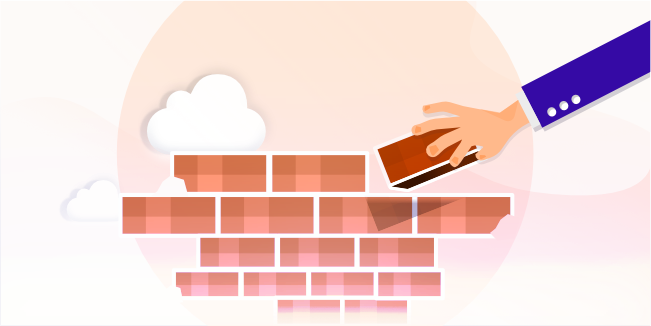
Building an app from scratch requires a significant time investment, dedication, and hard work. Depending on the features, complexity, design, and other factors, it may take anywhere between 4 to 9 months.
If you want to launch an MVP within a short period, it would be best to consider outsourcing your project to a reliable mobile app development company. They have the experience and expertise in building high-quality apps within the stipulated time frame. You can also get in touch with us as we are one of the industry's leading mobile app development companies. We will be happy to assist you further.